Bringing composting to your school or childcare center can provide engaging environmental activities for the children you serve. This introduction to composting is for teachers, school administration and childcare staff. Learn what you need to create a compost program in your school or childcare center. Creating a compost program at you school conditions children to think about the environmental cycles that support life.
What is a Compost Bin?
A Compost bin is a wood or plastic container that range in size from a bucket to a container the size of a dumpster. Its purpose is to create compost. Compost is a natural nutrient rich dirt-like material produced from waste that can be used to fertilize vegetables and plants.
How do you Use a Compost Bin?
To use a compost bin you combine two types of waste, green waste and brown waste. Green waste refers to nitrogen rich waste sources like green vegetable matter, fruits, grass and other fresh food sources. Brown waste refers to carbon rich sources such as dried leaves, wood chips, vegetable stalks, and manure.
While there are many recipes for compost, it has been generally accepted that the fastest compost is produced at a ratio of about 25-30 parts Carbon to every 1 part Nitrogen. Or 25-30 brown water such as twigs and dried leaves to 1 part green waste such as vegetable waste. This ratio is a general rule of thumb this chart shows the different ratios of waste based on the brown waste material.
After the waste material is in the bin you will need to add water. Water the compost so the material has the consistency of a damp sponge. You should be able to pick up some items and ring out a few drops of water.
Mix wastes so they are airy enough to get the necessary oxygen without being too dry. Make sure they are also damp without being too wet. To much Brown waste will dry the compost and slow decomposition. To much green waste will reduce the aeration causing the compost to become soggy and putrid again slowing decomposition.
Don’t worry to much about ratios most backyard composters who achieve regular success do not worry about ratios and maximum efficiency.
Finally, after the wastes have been put into the bin and wet, turn the pile. Use a pitchfork to turn the compost pile. This allows the decomposition to work throughout the compost bin.
What are the benefits of Composting?
Composting allows nutrients to be absorbed back into the soil. This can be especially beneficial if you have a school or community garden. You can use the compost created to fertilize your garden. In addition to the benefits to your garden, composting reduces waste. The U.S. Environmental Protection Agency estimates that composting can reduce the amount of waste sent to landfills by as much as 24%.
How to Start a Compost Program at school
The first step in creating a compost program in your school or childcare center is to purchase or create a compost bin. The size of the bin you need will depend on the amount of waste you produce.
Then start collecting green waste after lunch. At my school we have a bucket by the garbage can where kids put their organic waste. At the end of the lunch period a group of students take the green waste and weigh the bucket. Then take the bucket to the bin and spread the waste evenly on top of the pile.
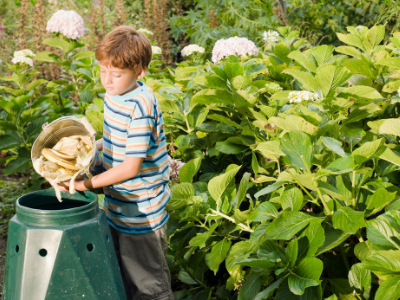
The weight of the waste is important because it allows you to know how much brown matter to add to the compost bin. To find sufficient brown waste, you may need to contact a local farmer or cattle rancher. It is helpful to keep brown waste on hand to cover green waste with when added to the compost bin.
This helps to keep flies away and is likely to provide you with close to an ideal ratio. Even if the ratios are not exact and the bin does not function at its most efficient it still provides a useful lesson. So you should not be discouraged if you think the compost bin will not be cared for perfectly.
Best Compost Bins for Schools
Outdoor Compost Bins can be utilized to start a compost program in any school or center with even a small amount of outdoor space. The Goplus Compost Bin is a good option for small outdoor spaces. It provides 105 gallons of capacity and you can remove the final compost easily through the lower doors. This allows even young student to help harvest and use the finished product.
A smaller outdoor unit may be all you need to create a compost program at your school. The Redmon Green Culture 65 Gal. Compost Bin might be just the size you need if your waste production is smaller. Sizing your compost bin according to your needs or having multiple small ones can help to make sure that your bin isn’t underutilized or over burdened, so your students will be able to see and use the results.

Redmon Green Culture Compost Bin 
Go Plus Compost Bin


Bring Composting Indoors
You can bring composting indoors and encourage your students creativity with this see through compost bin from Educational Insights. This system allows students to watch composting take place in three clear chambers and note changes in temperature.
Being able to see the decomposition take place allows students to compare different foods and ratios of brown waste to green waste. While this would not be an effective compost bin to dispose of bulk, it would make a perfect companion to a larger unit to bring the process into the classroom. Student of all ages enjoy watching the natural biological processes transform and reclaim energy.
What can be put in a Compost Bin?
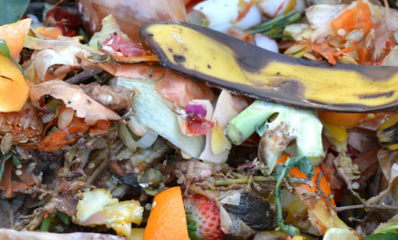
Most things can be put into a compost bin, but there are some foods that can be a problem. Meat and dairy products tend to become foul smelling in the composting process and encourage pests. While this is generally not an issue in a commercial composting facility it is one you may want to avoid at your school or childcare facility. Oils and very fatty food can be an issue as well, these type of products break down slowly and discourage proper aeration so it is best to avoid them if you want your bin functioning at maximum efficiency. It’s a good practice to keep animal waste aside from rabbit litter out of teaching compost bins. It’s best to utilize known sources of fresh green waste and dried brown waste, avoiding anything that may have been treated with any type of pesticide or herbicide.
What is the difference between Compostable and Biodegradable?
Compostable and Biodegradable are two different things and understanding the difference is important for any environmental learning program. Simply put all biodegradable products are compostable, but they will also break down under normal environmental circumstances in a few months time. Compostable products may not break down in a reasonable time frame under normal environmental circumstances.
In fact many products that claim to be compostable are not “backyard compostable”. This is because some of the compostable plates and cutlery as well as other “compostable products” are meant for industrial compost facilities that utilize large “Tub Grinders” to break the waste up into small pieces that readily breakdown. Many of these products will linger in backyard composters because they have not broken up to provide enough surface area for soil microbes to act on them.
How can we reduce our impact on the earth (Ecological Footprint)?
The purpose of any environmental learning program is to develop mindfulness of our environment and our impact on it. Composting provides a relatable and easily understood lesson in how even our waste products can turn into something valuable that supports life and a healthy planet.
Composting programs are a big part in developing an understanding of sustainable agriculture, and supporting its growth. Growing food locally free from chemicals and the cost of transportation to distant markets has a major effect on reducing energy dependence and the carbon footprint of our daily life. Every bit of every meal replaced by sustainable agricultural practices is a net gain for our environment. When compared to industrially farmed food, locally grown food from small farms and gardens is superior in every way for our health and the health of our communities and planet.
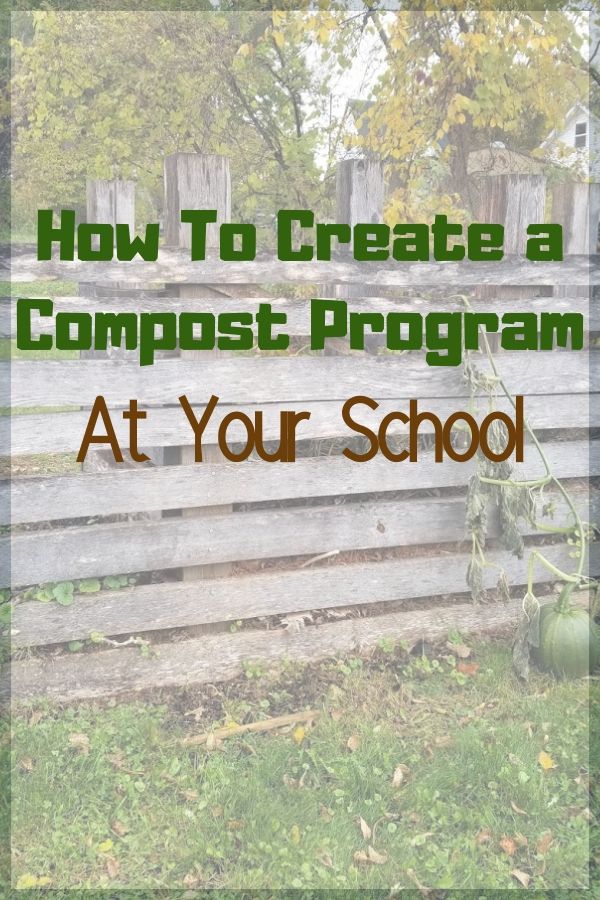

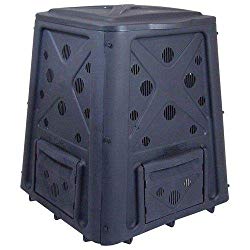
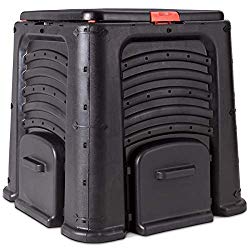


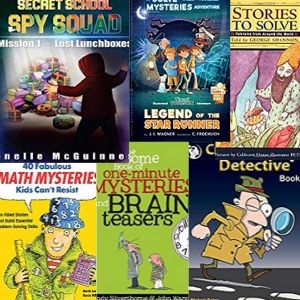

Pingback: How to Create an After School Lesson plan; Examples, Template and Ideas
Pingback: Community Garden at School; A how to Guide - That After School Life